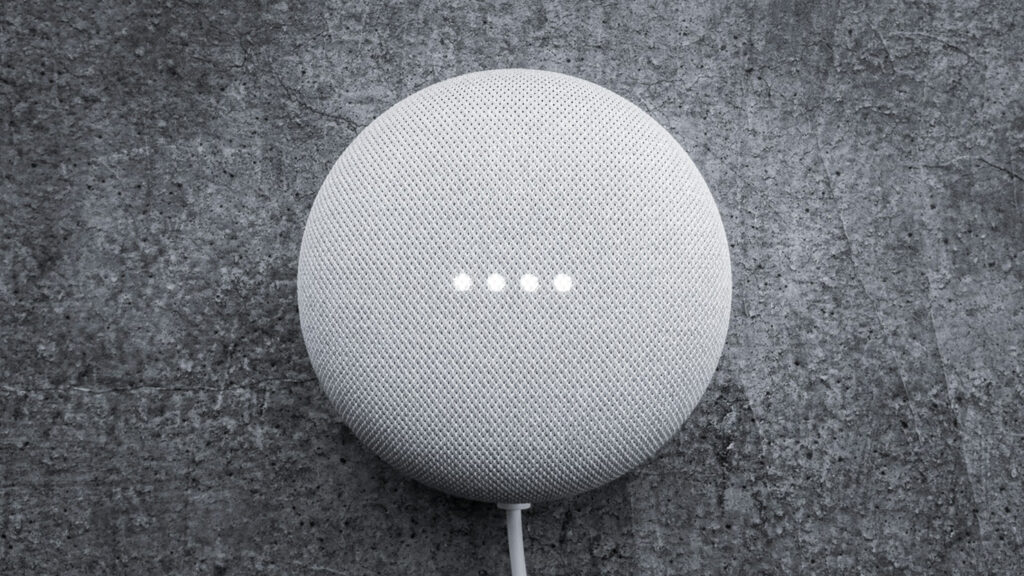
HOME / BLOG / STATISTICS
Voice Search Statistics 2025: 96+ Stats & Insights [Expert Analysis]
- October 14, 2025
- Bill Nash
- 3:08 am
Voice search isn’t a gimmick — it’s become a core part of how people interact with devices, access information, and make decisions. While many articles emphasize usage growth, the real shift is in how voice shapes search intent, content structure, and even search engine design.
Table of Contents
Voice Search Overview Statistics
Over 50% of global online searches are now conducted via voice assistants.
By 2025, there are more than 8.4 billion voice-enabled devices in use worldwide.
71% of consumers prefer using voice search over typing when possible.
The average voice query length is 4.2 words — shorter than text-based queries.
Voice searches are growing 9% year-over-year, according to recent SEO data.
52% of people use voice search daily or almost daily.
Voice assistants are available in 90% of smartphones shipped in 2025.
One in three households now owns at least one smart speaker.
70% of voice searches happen in natural conversational language.
Voice search adoption among Gen Z users is 40% higher than among Boomers.
Device Usage Statistics
Smartphones account for 58% of all voice searches.
Smart speakers represent about 26% of all voice queries.
15% of smart TV users regularly use voice commands to search for content.
Wearable devices (smartwatches, earbuds) handle about 8% of voice searches.
The Amazon Echo remains the market leader with 34% smart speaker share.
Google Nest devices hold 29% of global smart speaker share.
Apple HomePod usage grew by 22% in 2025.
Voice assistants are built into 75% of new cars sold in the U.S.
In-car voice searches have risen 17% since 2023.
Voice remote controls are used by 62% of smart TV owners.
User Behavior and Demographics
65% of people aged 25–49 talk to their voice-enabled devices daily.
Teens (13–18) use voice search 40% more often than adults.
45% of U.S. adults use voice assistants at least once a day.
36% of people use voice search while cooking.
28% use it while driving.
19% use it while watching TV.
17% use it in the bathroom (yes, really).
Voice search is 30% faster than typing on average.
41% of users say they trust the voice assistant’s answers “most of the time.”
85% of consumers say they use voice search to find quick answers or information.
Voice Search & E-Commerce
43% of voice search users shop using voice commands.
30% of online shoppers use voice assistants to track orders.
27% use it to reorder products.
Voice commerce is expected to hit $80 billion by 2026.
66% of smart speaker owners use them to add items to shopping lists.
58% use voice search to find nearby stores or restaurants.
Local business searches make up 46% of all voice queries.
76% of voice searches for local businesses result in a same-day visit.
“Near me” voice searches have grown by 150% since 2020.
Food and grocery delivery is the most common voice commerce category.
Voice Search and SEO
Voice search results load 52% faster than average web pages.
Featured snippets power 40.7% of voice search answers.
75% of voice search results come from the top 3 desktop results.
Pages with schema markup are 33% more likely to appear in voice results.
The average voice search result page has a 9th-grade reading level.
Long-tail keywords perform 2.5× better for voice search optimization.
Question-based content (“who,” “what,” “where,” “how”) dominates voice SERPs.
HTTPS-secured sites account for 70% of voice search results.
Average word count of a voice search result page: 2,312 words.
Voice-optimized pages have a mobile page speed of <4.6 seconds.
AI Assistants and Technology
Google Assistant recognizes over 95% of English speech accurately.
Amazon Alexa supports over 80,000 third-party skills.
Siri is used by 500 million active users monthly.
ChatGPT voice mode is boosting voice AI adoption among professionals.
40% of voice assistants now use generative AI to personalize responses.
AI-powered contextual search has improved result accuracy by 60%.
Natural language processing (NLP) models now understand 135+ languages.
Multimodal voice interfaces (voice + visual) are used in 22% of new apps.
Voice biometric security is used by 20% of financial institutions.
AI-driven sentiment analysis is being integrated into voice assistants for tone detection.
Business & Marketing Impact
57% of businesses have optimized for voice search in 2025.
45% of marketers plan to increase investment in voice SEO.
34% of brands have launched their own Alexa or Google Assistant skill.
50% of local businesses receive customers through voice search discovery.
Voice ads are expected to reach $19 billion by 2027.
39% of marketers say voice search has improved customer engagement.
Voice analytics tools are used by 28% of large enterprises.
B2B companies report a 21% conversion boost from voice-optimized content.
Voice SEO is now part of 72% of enterprise-level digital strategies.
Hospitality and retail industries see the highest ROI from voice SEO.
Regional Statistics
North America leads voice search usage with 35% global share.
Asia-Pacific is the fastest-growing region with 12% annual growth.
India’s voice search usage grew 3× faster than text-based search.
Europe holds 25% of global voice assistant market share.
Latin America voice commerce grew 19% year-over-year.
Middle East adoption surged due to Arabic-language voice models.
Chinese voice assistant market is valued at $12 billion in 2025.
South Korea has the highest smart speaker penetration at 41%.
Japan users perform 2 billion voice searches per month.
Africa’s mobile voice assistant usage is growing at 14% annually.
User Intent & Content Preferences
56% of users ask for factual information.
44% ask for directions or navigation.
38% request weather updates.
32% play music or podcasts.
28% control smart home devices.
25% search for restaurants or cafes.
21% ask for news updates.
19% use it for reminders and productivity tasks.
17% use voice to compose texts or emails.
11% use it for entertainment recommendations.
Future of Voice Search (2025 and Beyond)
Voice search market value is projected to reach $45 billion by 2030.
Voice-enabled advertising will grow by over 25% annually through 2028.
90% of websites will need some level of voice optimization by 2026.
Conversational AI will dominate 70% of customer interactions by 2027.
Multilingual voice support is expected to double global adoption.
AI voice clones will become a standard for brand personalization.
Voice-driven search on AR/VR platforms will exceed 1 billion users by 2030.
Voice assistants will replace on-screen menus in 40% of smart devices.
Voice-activated payments are expected to surpass $500 billion by 2032.
By 2035, voice will be the primary interface for over half of all digital interactions.
Ready to Grow Your Business?
At Marketing LTB, we specialize in helping businesses like yours thrive online. From strategic digital marketing and branding to web development and social media management, we offer the tools and expertise to elevate your brand and drive real results.
Let’s build something amazing together, get in touch with us today!

About Marketing LTB
Marketing LTB is a full-service marketing agency offering over 50 specialized services across 100+ industries. Our seasoned team leverages data-driven strategies and a full-funnel approach to maximize your ROI and fuel business growth. Discover how our expertise can drive revenue for your business>

About the author, Bill Nash
Bill Nash is the CMO of Marketing LTB with over a decade of experience, he has driven growth for Fortune 500 companies and startups through data-driven campaigns and advanced marketing technologies. He has written over 400 pieces of content about marketing, covering topics like marketing tips, guides, AI in advertising, advanced PPC strategies, conversion optimization, and others.
